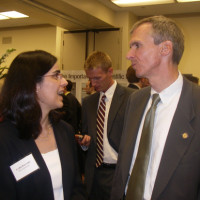2008 CRA Snowbird Session Focus: “Practical Solutions to a Continuing Problem: Sexual Harassment”
Many believe that the problems of sexual harassment and gender discrimination have largely vanished in our computer science community. While the prevalence of explicit discrimination and open harassment has diminished, it has not gone away entirely and implicit bias continues to exist. Discussions among female researchers on on-line forums and in professional groups indicate that graduate students and junior faculty in particular have concerns, and at times experience disturbing instances. There seems to be a consensus that departmental leadership plays a crucial role in creating a better environment. With this in mind, the 2008 CRA Conference at Snowbird for department chairs and labs/centers directors will include a panel session on sexual harassment and gender discrimination.








